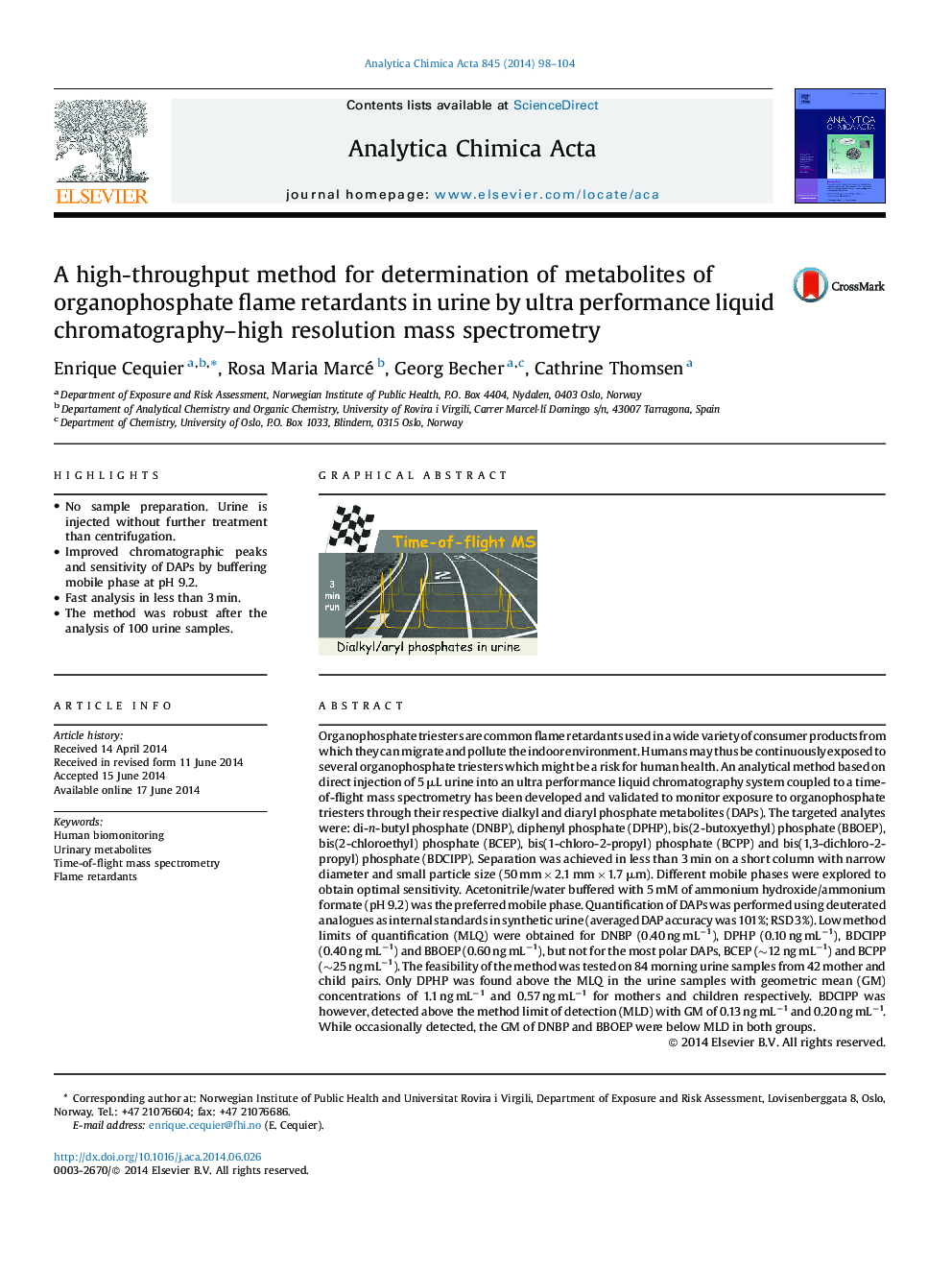| کد مقاله | کد نشریه | سال انتشار | مقاله انگلیسی | نسخه تمام متن |
|---|---|---|---|---|
| 1164419 | 1490987 | 2014 | 7 صفحه PDF | دانلود رایگان |
• No sample preparation. Urine is injected without further treatment than centrifugation.
• Improved chromatographic peaks and sensitivity of DAPs by buffering mobile phase at pH 9.2.
• Fast analysis in less than 3 min.
• The method was robust after the analysis of 100 urine samples.
Organophosphate triesters are common flame retardants used in a wide variety of consumer products from which they can migrate and pollute the indoor environment. Humans may thus be continuously exposed to several organophosphate triesters which might be a risk for human health. An analytical method based on direct injection of 5 μL urine into an ultra performance liquid chromatography system coupled to a time-of-flight mass spectrometry has been developed and validated to monitor exposure to organophosphate triesters through their respective dialkyl and diaryl phosphate metabolites (DAPs). The targeted analytes were: di-n-butyl phosphate (DNBP), diphenyl phosphate (DPHP), bis(2-butoxyethyl) phosphate (BBOEP), bis(2-chloroethyl) phosphate (BCEP), bis(1-chloro-2-propyl) phosphate (BCPP) and bis(1,3-dichloro-2-propyl) phosphate (BDCIPP). Separation was achieved in less than 3 min on a short column with narrow diameter and small particle size (50 mm × 2.1 mm × 1.7 μm). Different mobile phases were explored to obtain optimal sensitivity. Acetonitrile/water buffered with 5 mM of ammonium hydroxide/ammonium formate (pH 9.2) was the preferred mobile phase. Quantification of DAPs was performed using deuterated analogues as internal standards in synthetic urine (averaged DAP accuracy was 101%; RSD 3%). Low method limits of quantification (MLQ) were obtained for DNBP (0.40 ng mL−1), DPHP (0.10 ng mL−1), BDCIPP (0.40 ng mL−1) and BBOEP (0.60 ng mL−1), but not for the most polar DAPs, BCEP (∼12 ng mL−1) and BCPP (∼25 ng mL−1). The feasibility of the method was tested on 84 morning urine samples from 42 mother and child pairs. Only DPHP was found above the MLQ in the urine samples with geometric mean (GM) concentrations of 1.1 ng mL−1 and 0.57 ng mL−1 for mothers and children respectively. BDCIPP was however, detected above the method limit of detection (MLD) with GM of 0.13 ng mL−1 and 0.20 ng mL−1. While occasionally detected, the GM of DNBP and BBOEP were below MLD in both groups.
Figure optionsDownload as PowerPoint slide
Journal: Analytica Chimica Acta - Volume 845, 3 October 2014, Pages 98–104
